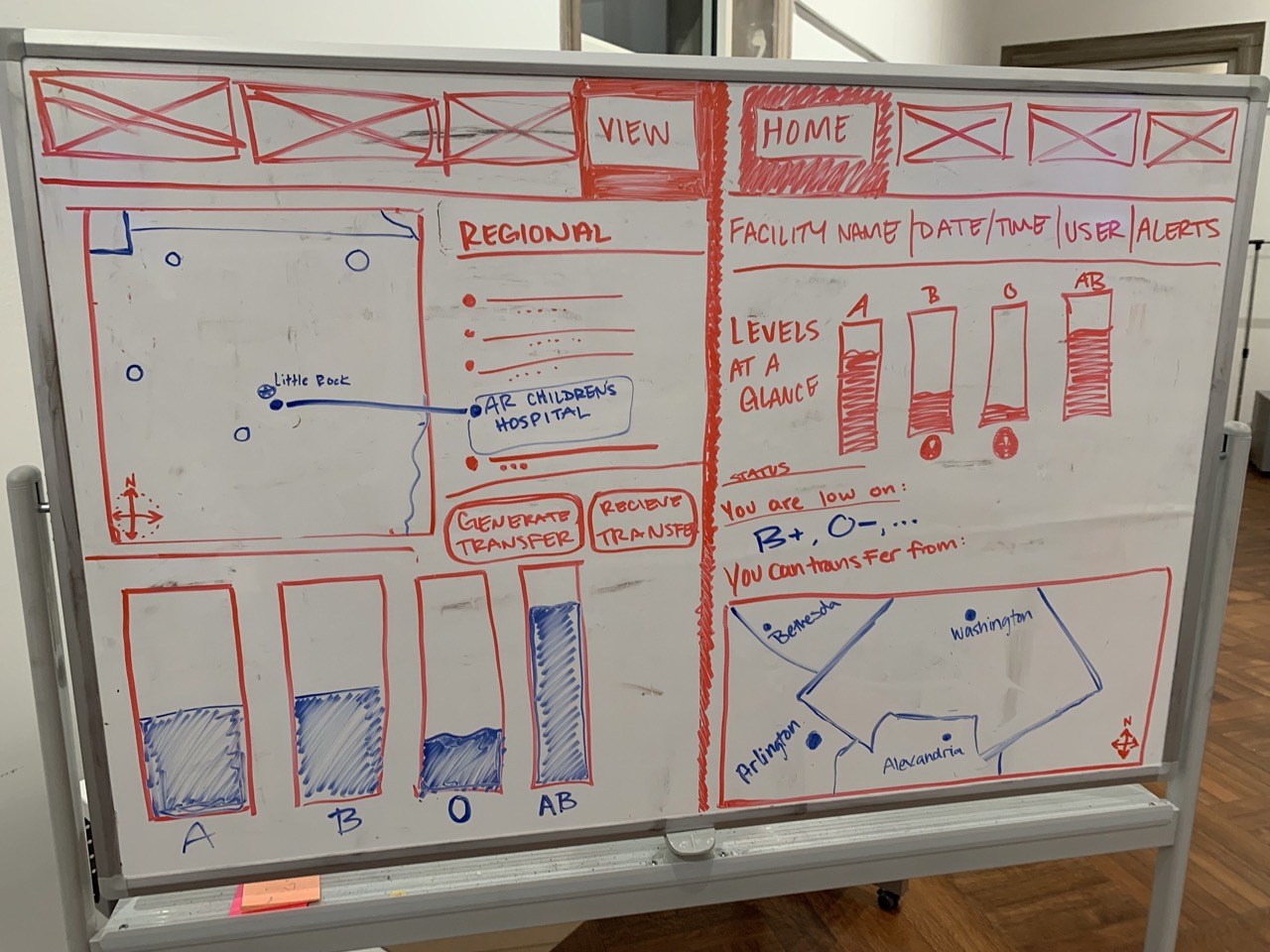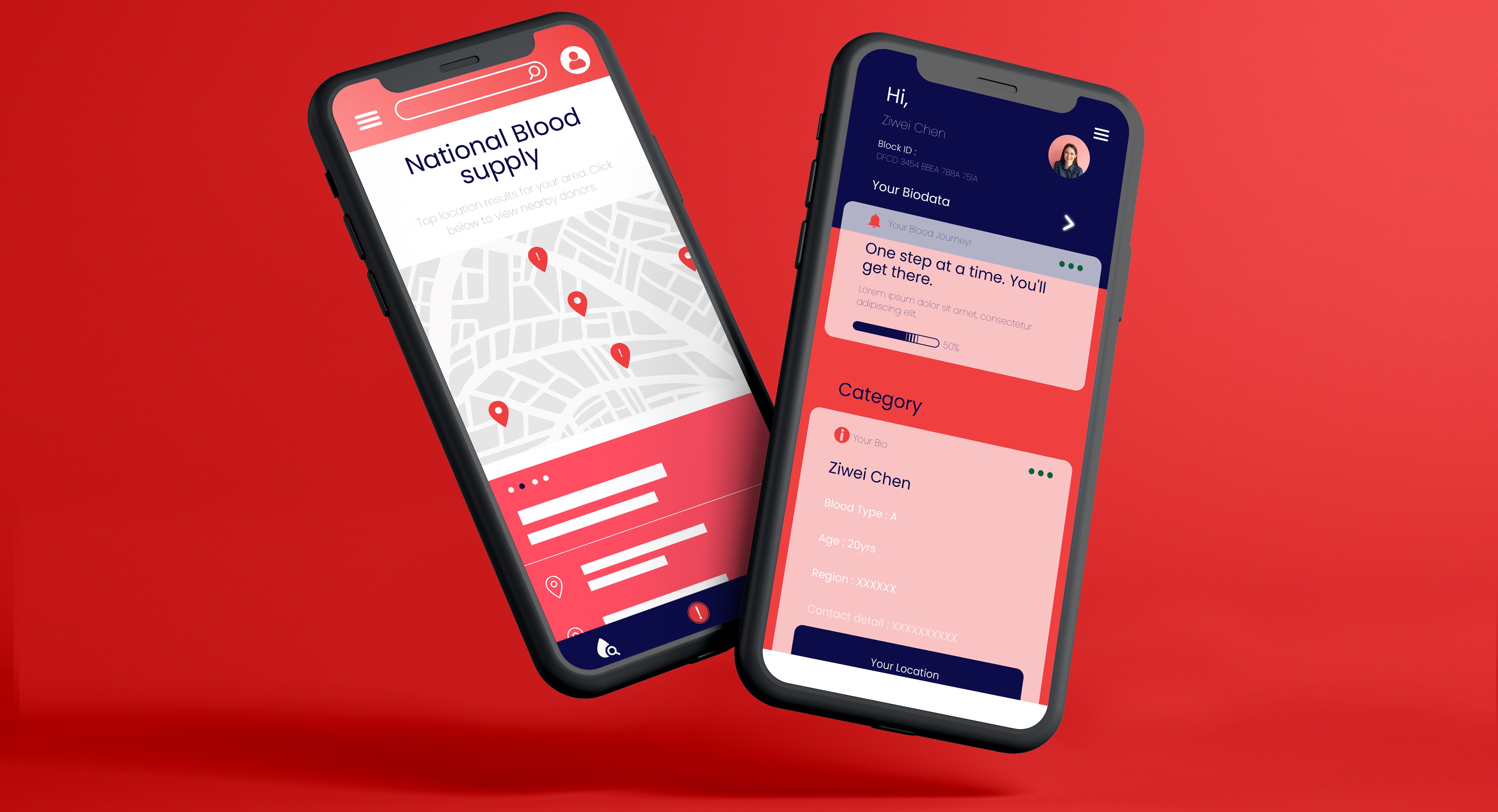AI-powered platform addressing critical blood supply waste and coordination gaps.
Situation
The United States faces a critical blood supply inefficiency problem—blood products frequently expire before they can be used, while simultaneously experiencing supply shortages. Unlike other developed nations, the US lacks a centralized blood network and instead relies on a fragmented system of private organizations to manage blood supply logistics. This disconnect between supply and demand creates dangerous gaps in availability while valuable resources go to waste.
What began as a speculative futures project exploring an "underground" blood bank network in a world where blood becomes prohibitively expensive evolved into discovering a real, pressing infrastructure problem. Research revealed that the current decentralized system lacks the coordination tools necessary to effectively match supply with demand across regions and organizations.
Task
As UI/UX Designer, Researcher, and Project Manager, I was responsible for developing a comprehensive digital solution that would:
- Research & Validation: Conduct user research with blood donation centers and medical facilities to understand current workflows and pain points in blood supply management
- Product Strategy: Design an AI-equipped haemovigilance application that could bridge supply/demand gaps across the fragmented US blood network
- Competition Preparation: Develop a compelling product and business case for the 2023 New Venture Competition at George Washington University
The challenge was creating a solution that could work within existing healthcare infrastructure while dramatically improving coordination and reducing waste.
Action
Research & Discovery:
- Leveraged proximity to the Red Cross near George Washington University and existing contacts within blood donation centers to conduct comprehensive user research. I mapped current information architecture from clinic perspectives, identifying critical gaps in communication and coordination between organizations.
User-Centered Design Process:
- Following initial brainstorming sessions, I focused on validating core assumptions through direct engagement with healthcare professionals. This research-first approach ensured the product addressed real operational challenges rather than perceived problems.
MVP Development:
- Created a functional minimum viable product that demonstrated core value propositions while remaining feasible for implementation within existing healthcare systems. The design balanced sophisticated backend coordination with intuitive frontend experiences.
Result
Competition Success:
Human2Human advanced as a semifinalist in the 2023 New Venture Competition at George Washington University, validating both the market need and our solution approach among judges and industry experts.
Strategic Impact:
The project evolved from speculative design into a viable solution for a critical healthcare infrastructure problem, demonstrating how design research can uncover and address real systemic issues. The work established a framework for future healthcare coordination platforms that balance privacy, accessibility, and operational efficiency.

Blood donation process - Journey map based on local blood donation med tech

Design process whiteboarding session - mapping out the blood supply coordination workflow

Platform interface mockup - demonstrating the AI-powered coordination solution
Key Takeaways
This project reinforced the importance of understanding healthcare regulations and stakeholder needs in digital health design. The most effective healthcare systems are those that balance innovation with compliance and user safety.
Technologies & Tools
React, Node.js, healthcare APIs, system design, prototyping, healthcare regulations, stakeholder research, digital health platforms
Team & Collaboration
Worked with healthcare professionals, IT specialists, and regulatory experts to ensure the prototype met both user needs and compliance requirements while demonstrating technical feasibility.